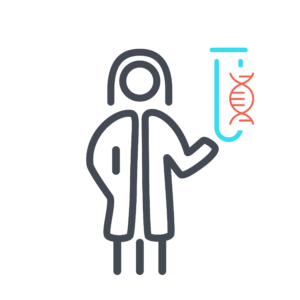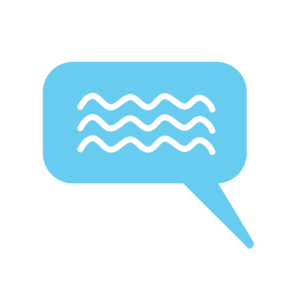ADSL-Related Syndrome

Table of contents
- What is ADSL-related syndrome?
- Key Role
- Symptoms
- What causes ADSL-related syndrome?
- Why does my child have a change in the ADSL-related syndrome gene?
- What are the chances that other family members of future children will have ADSL-related syndrome?
- How many people have ADSL-related syndrome?
- Do people who have ADSL-related syndrome look different?
- How is ADSL-related syndrome treated?
- Behavior and development concerns linked to ADSL-related syndrome
- Medical and physical concerns linked to ACTL6B-related syndrome
- Where can I find support and resources?
- Sources and References
ADSL-related syndrome is also called adenylosuccinate lyase deficiency. For this webpage, we will be using the name ADSL-related syndrome to encompass the wide range of variants observed in the people identified.
What is ADSL-related syndrome?
ADSL-related syndrome happens when there are changes in the ADSL gene. These changes can keep the gene from working as it should.

Key Role
The ADSL protein plays an important role in cell metabolism, the process by which cells make energy.
Symptoms
Because the ADSL gene is important for brain activity, many people who have ADSL-related syndrome have:
- Decreased muscle mass
- Developmental delay
- Intellectual disability
- Difficulty walking
- Seizures
- Features of autism
- Behavior and temper issues
- Brain changes seen on magnetic resonance imaging (MRI)
- Lower than average muscle tone
- Difficulty speaking
- Aggression
- Hyperactivity
What causes ADSL-related syndrome?
ADSL-related syndrome is a genetic condition, which means that it is caused by variants in genes. Our genes contain the instructions, or code, that tell our cells how to grow, develop, and work. Every child gets two copies of the ADSL gene: one copy from their mother’s egg, and one copy from their father’s sperm.
Some people have variants to their genes that prevent them from working properly. A variant in one copy of the ADSL gene has little or no effect on their health — because one working copy is enough. People who have one working copy of the gene and one non-working copy of the gene are called ‘carriers’. Some people have genes where both copies do not work as they should. In these cases, the person has inherited non-working copies of the gene from both parents. This can lead to physical issues, developmental issues, or both.
Autosomal recessive conditions
ADSL-related syndrome can also be an autosomal recessive genetic condition. To be affected with symptoms of an autosomal recessive genetic condition, a person has two damaging variants on both copies of their ADSL. For someone with an autosomal recessive genetic syndrome, every time they have a child they will pass on one non-working copy of ADSL.
Autosomal Recessive Genetic Syndrome
Why does my child have a change in the ADSL-related syndrome gene?
No parent causes their child’s ADSL-related syndrome. We know this because no parent has any control over the gene changes that they do or do not pass on to their children. Please keep in mind that nothing a parent does before or during the pregnancy causes this to happen. The gene change takes place on its own and cannot be foreseen or stopped.
What are the chances that other family members of future children will have ADSL-related syndrome?
Each family is different. A geneticist or genetic counselor can give you advice on the chance that this will happen again in your family.
- The risk of the same biological parents to a child with an autosomal recessive genetic condition, having another child who has ADSL-related syndrome is almost always 25 percent.
- The chance of two carrier parents having a child who is also a carrier is 50 percent. Carriers are not expected to have symptoms.
- The chance of them having a child who is not a carrier at all is 25 percent.
For a person who has ADSL-related syndrome, the risk of having a child who has the same syndrome depends on their partner.
- If their partner is a carrier, they have a 50 percent chance of having a child who has the syndrome and a 50 percent chance of having a child who is a carrier.
- If their partner is not a carrier, they have nearly a 0 percent chance of having a child who has the syndrome and a 100 percent chance of having a child who is a carrier.

How many people have ADSL-related syndrome?
As of 2024, at least 90 people with ADSL-related syndrome have been described in medical research.

Do people who have ADSL-related syndrome look different?
People who have ADSL-related syndrome may look different. Appearance can vary and can include some but not all of these features:
- Growth problems
- Low-set ears
- Small nose
- Eyes that are not aligned and that have uncontrolled left and right movement
- Thin upper lip

How is ADSL-related syndrome treated?
Scientists and doctors have only just begun to study ADSL-related syndrome. At this point, there are no medicines designed to treat the syndrome. A genetic diagnosis can help people decide on the best way to track the condition and manage therapies. Doctors can refer people to specialists for:
- Physical exams and brain studies
- Genetics consults
- Development and behavior studies
- Other issues, as needed
A developmental pediatrician, neurologist, or psychologist can follow progress over time and can help:
- Suggest the right therapies. This can include physical, occupational, speech, or behavioral therapy.
- Guide individualized education plans (IEPs).
Specialists advise that therapies for ADSL-related syndrome should begin as early as possible, ideally before a child begins school.
If seizures happen, consult a neurologist. There are many types of seizures, and not all types are easy to spot. To learn more, you can refer to resources such as the Epilepsy Foundation’s website: epilepsy.com/learn/types-seizures.

This section includes a summary of information from major published articles. It highlights how many people have different symptoms. To learn more about the articles, see the Sources and References section of this guide.
Behavior and development concerns linked to ADSL-related syndrome
There are three types of ADSL-related syndrome. The first one is called type I or severe, and it is the most common, with onset occurring in the first months of life. With type II or mild, symptoms develop within the first few years of life or later. Finally, there is neonatal, which is the most severe form that is present at birth.
The information below includes people with all three types of ADSL-related syndrome.
- 51 out of 88 people had type I (58 percent)
- 25 out of 88 people had type II (28 percent)
- 12 out of 88 people had neonatal (14 percent)
Learning
People with ADSL-related syndrome had developmental delays or intellectual disabilities. Developmental delay was common in the first year of life.
The severity of intellectual disability (ID) varied among people:
- 17 out of 68 people had mild ID (25 percent)
- 12 out of 68 people had moderate ID (18 percent)
- 39 out of 68 people had severe ID (57 percent)

Behavior
People with ADSL-related syndrome had behavioral challenges, such as features of autism.
- 51 out of 88 people had features of autism (58 percent)
Brain
Most people with ADSL-related syndrome had neurological issues, such as lower than average muscle tone (hypotonia), smaller than average brain size (microcephaly), brain changes seen on magnetic resonance imaging (MRI), and seizures.
- 53 out of 88 people had hypotonia (60 percent)
- 20 out of 88 people had microcephaly (23 percent)
- 42 out of 88 people had brain changes seen on MRI (48 percent)
- 72 out of 88 people had seizures (82 percent)

Medical and physical concerns linked to ACTL6B-related syndrome
Vision
About 1 in 4 people with ADSL-related syndrome had vision issues, such as crossed eyes (strabismus).
- 23 out of 88 people had vision issues (26 percent)
Heart
Some people with ADSL-related syndrome had heart dysfunction.
- 6 out of 88 people had heart dysfunction (7 percent)

Where can I find support and resources?
Simons Searchlight
Simons Searchlight is an online international research program, building an ever growing natural history database, biorepository, and resource network of over 175 rare genetic neurodevelopmental disorders. By joining their community and sharing your experiences, you contribute to a growing database used by scientists worldwide to advance the understanding of your genetic condition. Through online surveys and optional blood sample collection, they gather valuable information to improve lives and drive scientific progress. Families like yours are the key to making meaningful progress. To register for Simons Searchlight, go to the Simons Searchlight website at www.simonssearchlight.org and click “Join Us.”
- Learn more about Simons Searchlight: www.simonssearchlight.org/frequently-asked-questions
- Simons Searchlight webpage with more information on ADSL: www.simonssearchlight.org/research/what-we-study/adsl
- Simons Searchlight ADSL Facebook community: https://www.facebook.com/groups/ADSL

Sources and References
The content in this guide comes from published studies about ADSL-related syndrome.
- Cutillo, G., Masnada, S., Lesca, G., Ville, D., Accorsi, P., Giordano, L., Pichiecchio, A., Valente, M., Borrelli, P., … & Veggiotti, P. (2024). Electroclinical features and phenotypic differences in adenylosuccinate lyase deficiency: Long-term follow-up of seven patients from four families and appraisal of the literature. Epilepsia Open, 9(1), 106-121. https://pubmed.ncbi.nlm.nih.gov/37842880/
